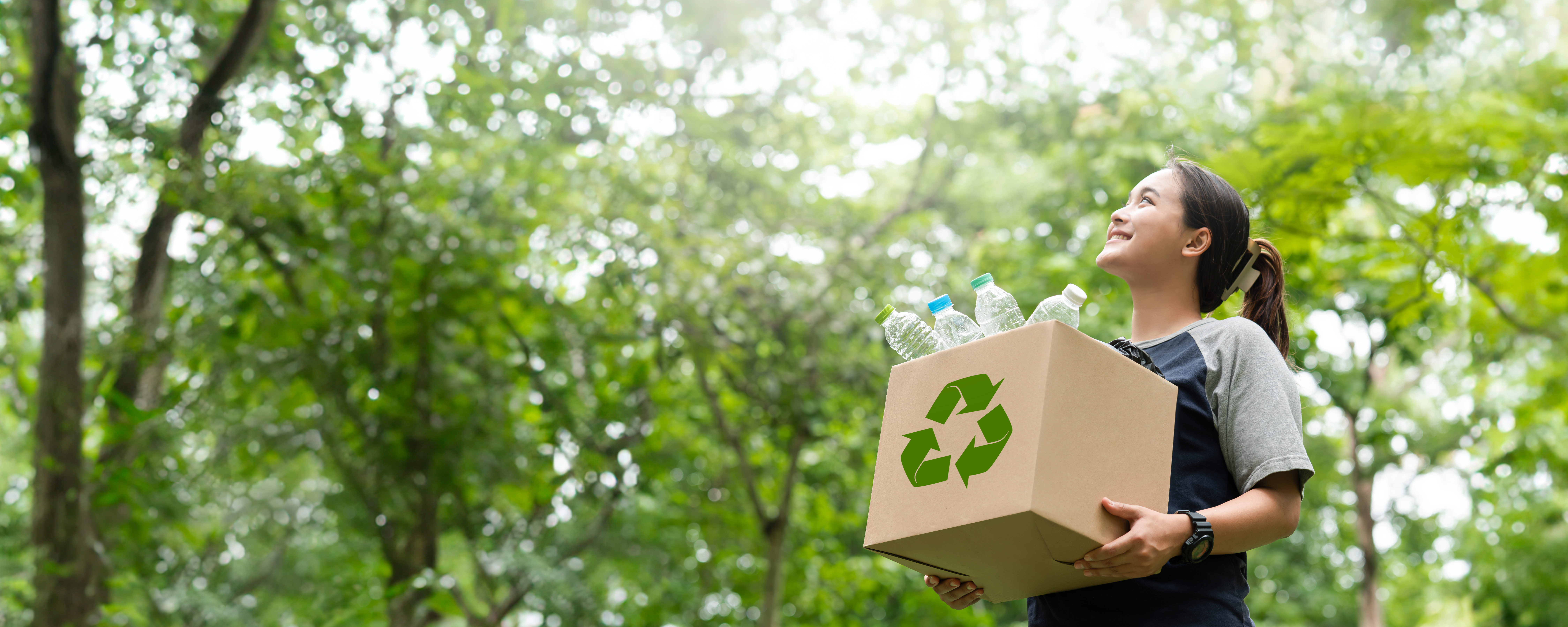
Plastics pollution is an enormous, multi-faceted problem in our world, and a lot of that comes from how plastics are a significant part of our society and daily lives. The Stand with Sippi initiative was designed by the River Museum's Green Team and funded, in part, through Dubuque Metropolitan Area Solid Waste Agency (DMASWA), to educate the community and build awareness about plastics reduction. Check out this page for informational resources and ways we all can take a stand to make a difference!
Visit the DMASWA website for more resources and information.
Pledge to Pass on Plastic
Every day is a new day to limit plastics that end up in our shared waters and landfills. From plastic straws to bags, cutlery, and plates, when there is a choice-pledge to pass on plastic.
What We're Doing
Eliminating and reducing plastic products takes efforts from everyone. The River Museum is proud to model change, in hopes that others will be inspired to make the change as well. We have implemented the following to help reduce the number of plastic products in our environment.
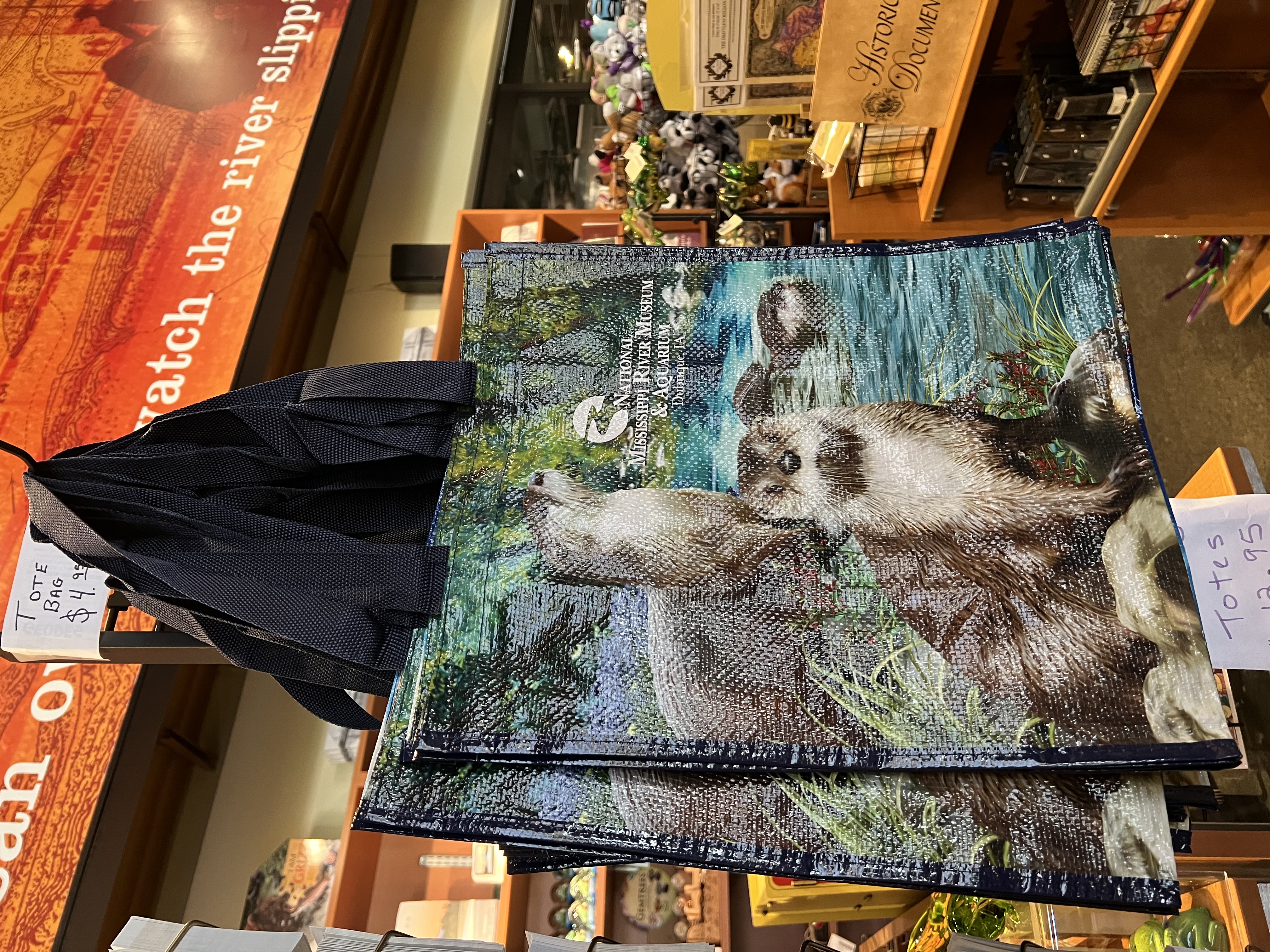
• No plastic bags in our retail stores
• Reusable water bottle refill stations
• No petroleum based plastic straws
• No plastic cutlery
• Reduced-plastic packaging in our gift shops
• No plastics in to-go containers
At least 80% of ocean plastic comes from land-based sources, and 75% of that total comes from uncollected waste while the remainder is a result of gaps in the collection system. Plastic is the most abundant type of marine debris on a global scale, negatively impacting more than 700 species through entanglement and ingestion. Freshwater species are not immune from this either: microplastics that come from cigarette butts or even small particles found in health and beauty products.
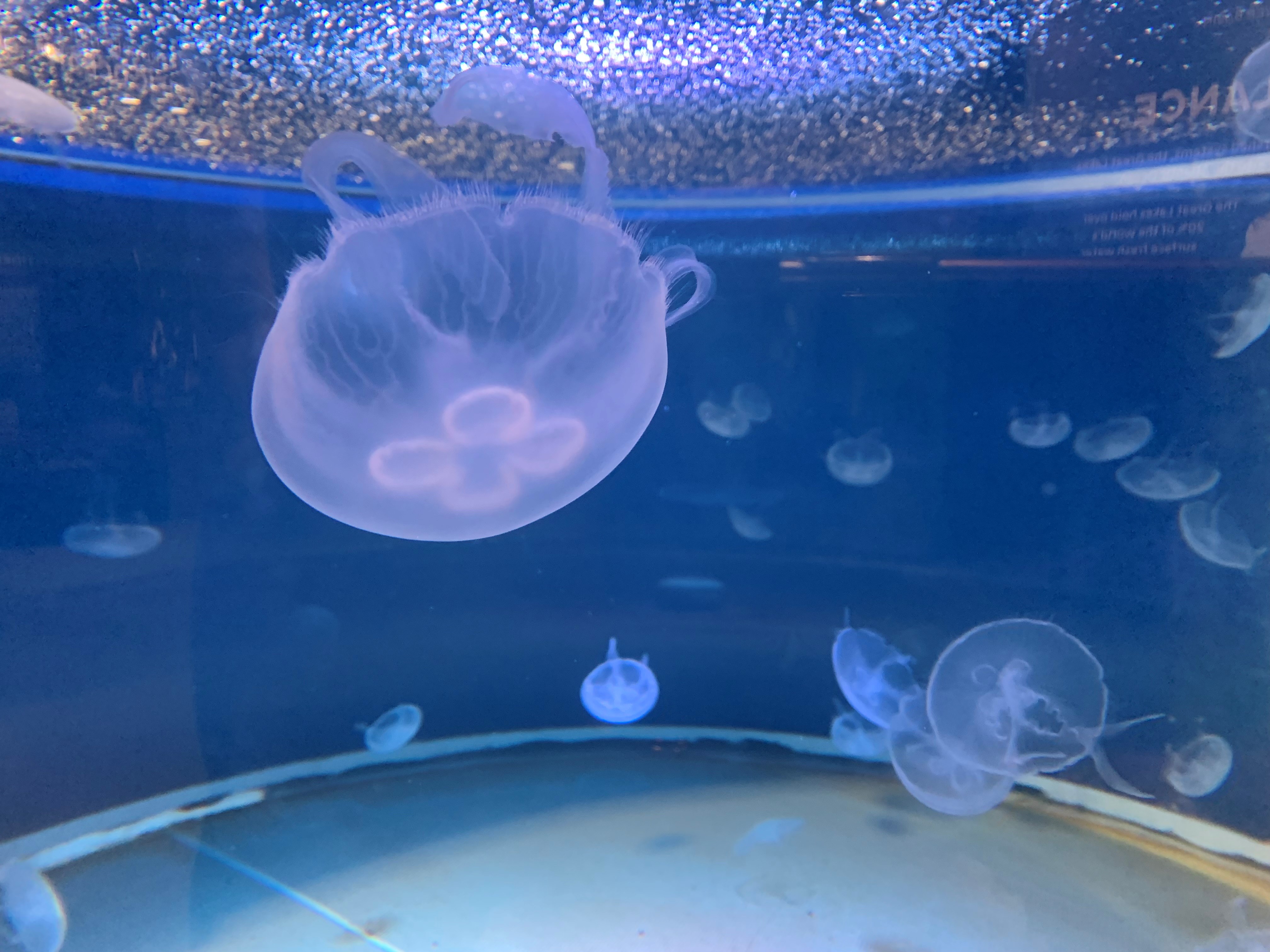
Species like sea turtles, for example, that prey on Moon Jellies fall victim to the increased plastic in the ocean. When plastic resembles a food item floating in the water, predators cannot tell the difference. If you look at both photos, you can see the resemblances plastic bags have to a Moon Jelly. One way we can reduce the confusion is reducing plastic bag use, and programs like the City of Dubuque's Bring Your Own Bag. A small change in our community can be felt far away! Learn more about the initiative below!
The Next Generation is Ready to Make a Difference
When a group of teens with a passion for stewardship come together, they make amazing things happen in a community. The National Mississippi River Museum and Aquarium is proud to host such a group with the Teens Take C.A.A.R.E (Conservation Action through Advocacy, Research, and Engagement).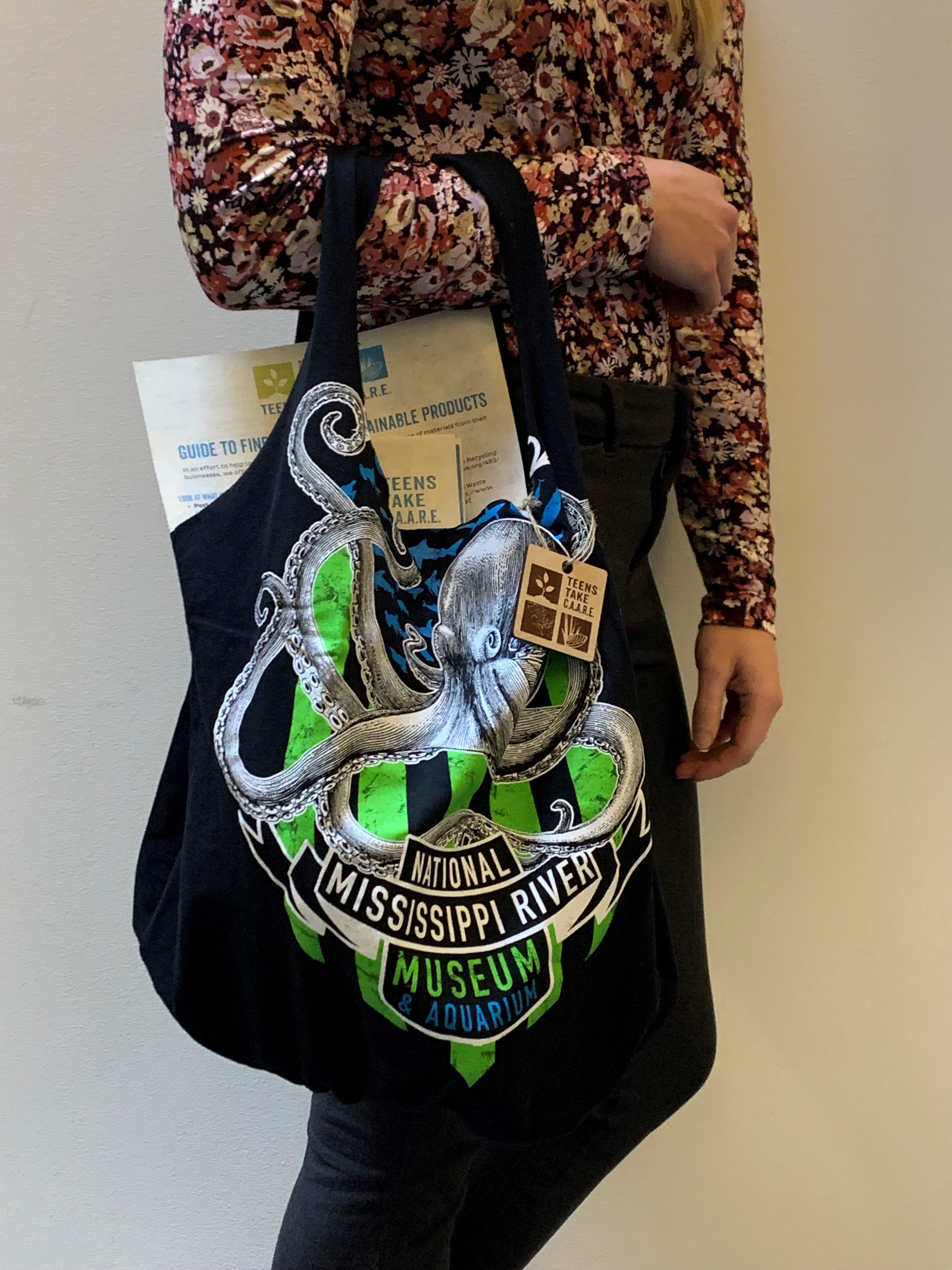
This program allows teens to come together and choose a passion project to follow through during the year, while having the chance to have fun with other likeminded people. In their first year, the group was passionate about helping local businesses reduce their environmental impact through business practices. This included talking with businesses and learning the workings to help make suggestions unique to the business. The group also made a sustainability document that businesses could refer to.
Teens Take C.A.A.R.E run through the school year, meeting biweekly, and is open to any high school student in the Dubuque community. If you like to get involved and inspire environmental stewardship in our community, please contact Codi Sharkey at csharkey@rivermuseum.org for more information!
Teens Take C.A.A.R.E was featured by the National Oceanic and Atmospheric Administration (NOAA) for their project. Click the link below to read more!
Let's Break it Down
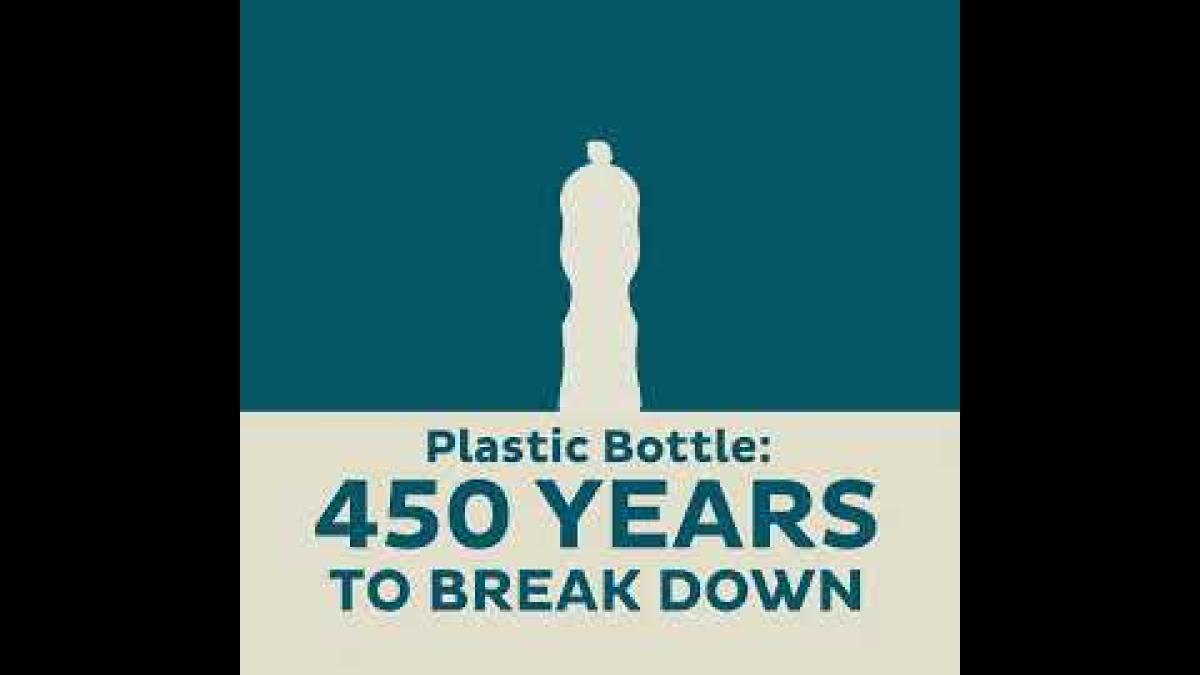
Just because we may not think about our trash once it's gone doesn't mean we SHOULDN'T think about what happens next. In general, most things we throw away take longer to break down than we think! According to the United States Environmental Protection Agency (EPA), the average American will produce 5 lbs. of municipal solid waste per day, so that adds up quick!
What can we do to reduce that waste? Reuse or repurpose items when possible to prevent something from ending up in a landfill. Swap out plastic-based items like straws for natural ones like agave straws (which we use at the River Museum!) or bring your own water bottle and refill it!
Here are some surprising statistics about the lifespan of waste items:
- Paper bag or newspaper - breaks down in 7 weeks
- Banana - breaks down in 2 years
- Agave straws - break down in 3 years
- Styrofoam - breaks down in 50 years
- Exterior battery covering - breaks down in 100 years (the interior metals NEVER break down)
- Plastic straws - break down in 200 years
- Plastic bottles - break down in 450 years
- Disposable diaper - breaks down in 500 years
- Plastic bag - breaks down in 1,000 years
- Glass bottles - break down in 1 million years
Plastic's Impact on Historic Preservation
Curator of Historic Collections Kristin Glomstad-Yoon shares the impacts plastics have on museum professionals and the challenges they face to preserve artifacts made with these products.
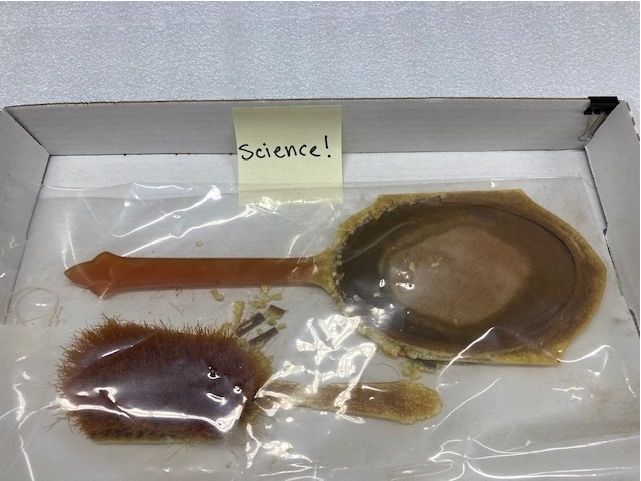
At this point, we all know the problem with plastic, right? It never goes away. Instead, plastics accumulate and pollute our land and waterways. In landfills, plastics don’t decompose like other materials, but they do break down into smaller and smaller pieces. Eventually these pieces become microplastics, which pollute our world in new ways by gathering in our soil, food sources, and even our own bodies. Once touted as a solution, we now realize that recycling cannot meet the demand or solve the issue entirely. The environmental problem posed by plastic is truly staggering.
Unfortunately, that is not the only plastic problem. While it’s true that plastic never goes away, it’s also true that plastic does not stay in its original form long term. The first fully synthetic plastic, Bakelite, was invented in 1907. Many other types of plastics have been introduced since then, along with additives to add color or strength, or plasticizers for flexibility. While plastics have been around relatively briefly, early plastics are just now beginning to show how they will age – and it’s not good. This presents a significant challenge to museums that collect material culture to document our history and seek to preserve it in perpetuity. While museums are certainly up to the challenge of preserving many unique and priceless artifacts, the industry is discovering that plastics are some of the most fragile items in our collections. Over time, plasticizers and other additives migrate out of the material, leaving behind an object that is often weak, brittle, or shrunken. Unfortunately, once the damage becomes visible it is already too late. Museums have no means of conserving plastic artifacts, and so prevention is currently the only option.
Simple Switches to Reduce Single-Use Plastics

Yearly, around 8 million tons of plastic ends up in the ocean, impacting habitats including wildlife, which can ingest it or become entangled. There are options to help reduce waste entering the waterways and to lessen the reliance on fossil fuels when creating plastic, which include biobased, biodegradable, and compositable plastics.
A product’s chemical structure determines if it is biodegradable, compostable, or neither.
Plastic that completely degrades into elements found in nature is termed biodegradable. There are various timeframes and environmental conditions needed depending on the product, which means this does not solve the issue of marine debris or litter. Under controlled conditions at home or within industrial composting facilities, compostable plastic degrades into a usable, non-toxic soil conditioner.
Biobased plastic is created from renewable materials, including plants. Two examples are polylactic acid (PLA) and polyhydroxyalkanoates (PHA). PLA is created from sugar starches, with the majority coming from corn. It uses 65% less energy to produce than plastics that are petroleum-based and releases 68% less greenhouse gases. PLA is used in the packaging industry. Within 45-90 days, PLA plastic has the ability to break down with industrial composting, but it needs the right conditions to degrade quickly.
Another biobased plastic, PHA, is created from processing vegetable oils, starches, and sugars. The biopolymer can also be produced from methane and wastewater through bacterial fermentation. Straws are an example that can be made out of PHA, which may biodegrade or be composted.
At Work: Bring Your Own Utensils and Containers
Bring reusable containers and utensils to work or school to cut down on waste in the landfills. A study out of the University of Michigan discovered that when compared with a single-use product (depending on the material), a reusable container will use more energy at first, creating additional greenhouse gases in the atmosphere. However, after 4-13 uses, it will break even with the single-use container. As for plastic utensils, over 100 million are used daily in the United States. Not only are most of them created using polystyrene, which when heated releases toxic chemicals, but it can take up to 1,000 years for them to decompose.
The River Museum's Green Team handed out reusable resealable bags at the annual Taste of Summer event. The Team had a booth and shared information about how to reduce plastic use and educate visitors on small changes they could make in their own lives and plastic consumption.
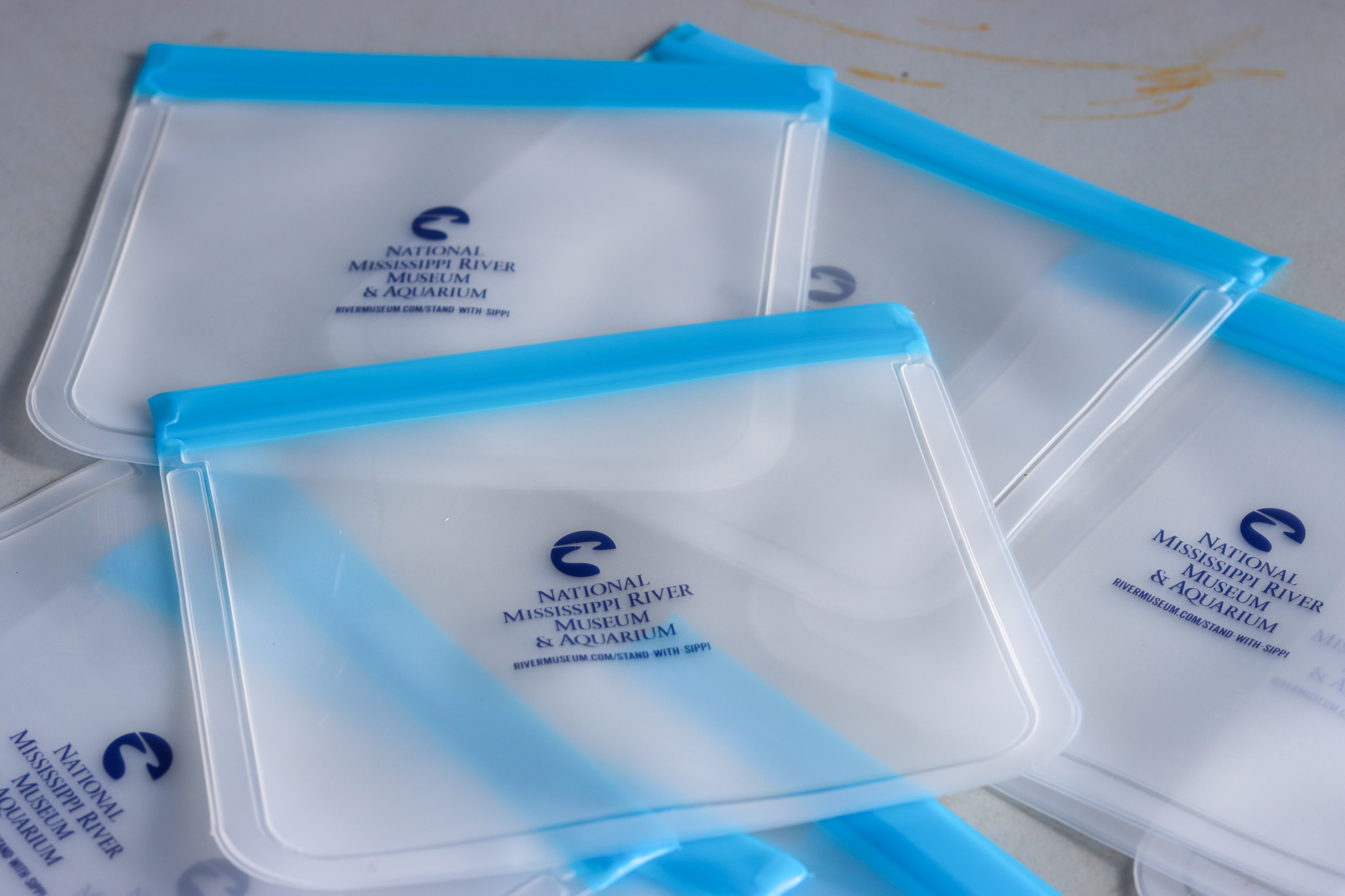
At Home: Be Aware of Microfiber Pollution from Washing Clothes
Clothing is a main source of plastic pollution among the estimated 8 million tons of plastic entering oceans annually. Plastic-based materials including rayon, polyester, acrylic, and nylon are used to create clothing items. Synthetic clothes lose small (less than 5 mm) plastic fragments, termed microfibers, while being washed. Within nature, these microfibers are the dominant type of microplastic. They are found all over the world within land and aquatic ecosystems and are very tough to eliminate. However, there are steps to limit microfibers pollution while washing clothes.
1. Wash clothing less often.
2. Wash full loads, which creates less friction among the items.
3. Use cold water with a short cycle.
4. Use a front-loading washing machine, if possible.
5. Add an external microfiber filter to the washing machine. Or use a microfiber catching laundry bag or ball. Then, toss the microfibers in the garbage.
Special thank you to the River Museum’s Green Committee for curating all our single-use plastic reduction education and initiatives, as well as the Dubuque Metropolitan Area Solid Waste Agency (DMASWA) for its support!

